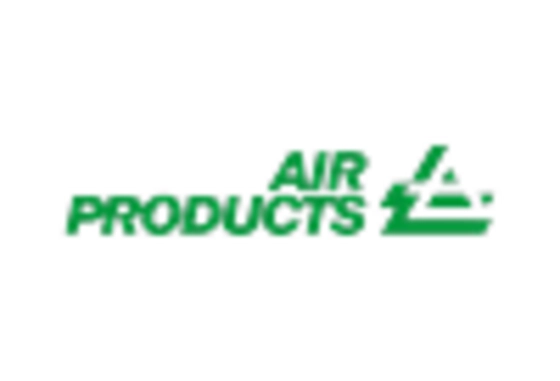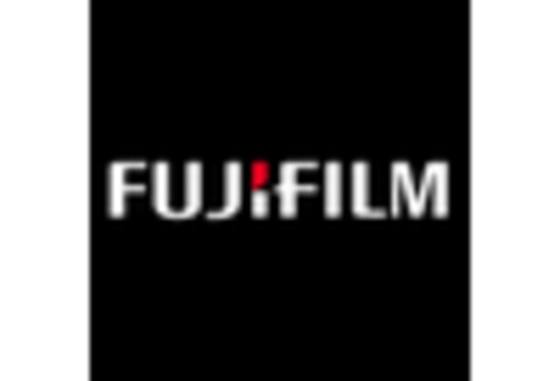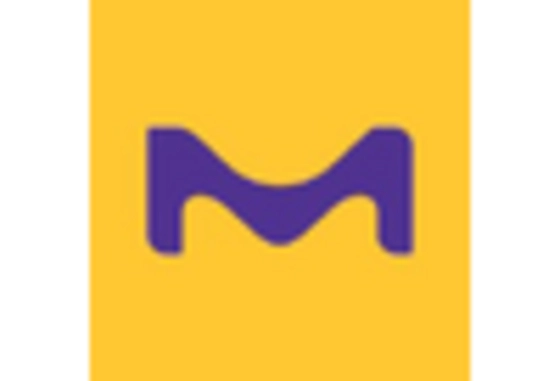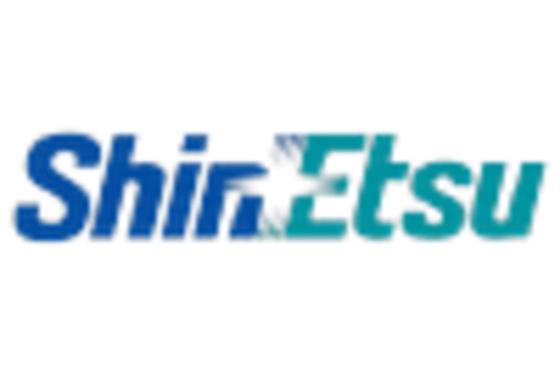Expansion of 5G Technology
The rollout of 5G technology is poised to create new opportunities within the Semiconductor Chemical Market. As telecommunications companies invest heavily in infrastructure to support faster and more reliable networks, the demand for semiconductors is expected to rise. The semiconductor market for 5G applications is projected to grow at a compound annual growth rate of over 20% through 2025. This growth will likely drive the need for specialized chemicals used in the production of high-frequency components and devices. Consequently, the Semiconductor Chemical Market is likely to experience increased activity as companies adapt to the requirements of 5G technology, ensuring they provide the necessary chemical solutions.
Growth of Electric Vehicles
The rise of electric vehicles (EVs) is significantly influencing the Semiconductor Chemical Market. As the automotive sector transitions towards electrification, the demand for semiconductors is expected to increase substantially. It is estimated that the semiconductor content in EVs could reach around 1,000 USD per vehicle by 2025, compared to approximately 400 USD in traditional vehicles. This shift necessitates the use of advanced semiconductor chemicals, which are crucial for the production of power electronics and battery management systems. Therefore, the Semiconductor Chemical Market stands to gain from the burgeoning EV market, as manufacturers seek to innovate and enhance their chemical offerings to support this transformation.
Rising Focus on Renewable Energy
The Semiconductor Chemical Market is also benefiting from the increasing emphasis on renewable energy sources. As countries strive to meet sustainability goals, the demand for semiconductors in solar panels and wind turbines is on the rise. It is estimated that the semiconductor market for renewable energy applications could reach approximately 50 billion USD by 2025. This growth is likely to drive the need for semiconductor chemicals that are essential for the production of photovoltaic cells and other renewable energy technologies. As a result, the Semiconductor Chemical Market is expected to expand as manufacturers align their offerings with the growing renewable energy sector.
Increasing Demand for Advanced Electronics
The Semiconductor Chemical Market is experiencing a surge in demand driven by the proliferation of advanced electronics. As consumer preferences shift towards high-performance devices, manufacturers are compelled to enhance their production capabilities. This trend is reflected in the projected growth of the semiconductor market, which is expected to reach approximately 600 billion USD by 2025. The need for specialized chemicals, such as photoresists and etchants, is likely to escalate as these materials are essential for the fabrication of intricate semiconductor components. Consequently, the Semiconductor Chemical Market is poised to benefit from this increasing demand, as companies strive to meet the evolving requirements of the electronics sector.
Advancements in Semiconductor Manufacturing Processes
Technological advancements in semiconductor manufacturing processes are significantly impacting the Semiconductor Chemical Market. Innovations such as extreme ultraviolet lithography and atomic layer deposition are enabling the production of smaller and more efficient semiconductor devices. These advancements necessitate the use of high-purity chemicals that meet stringent quality standards. The semiconductor manufacturing sector is projected to invest over 100 billion USD in research and development by 2025, further driving the demand for specialized chemicals. As a result, the Semiconductor Chemical Market is likely to see increased investment and innovation, as companies strive to keep pace with the evolving landscape of semiconductor manufacturing.
















Leave a Comment